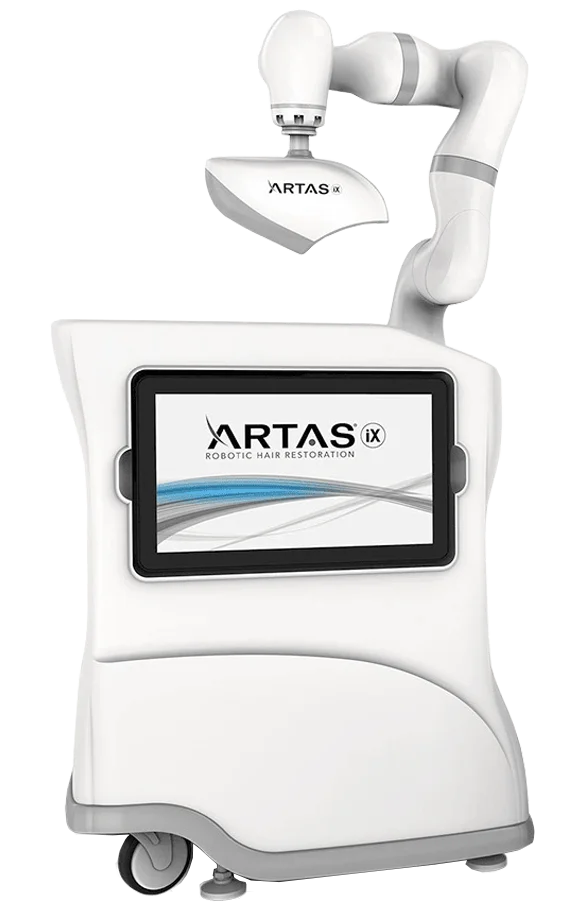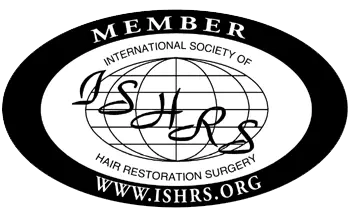Hair Restoration Surgery
Say Yes to A More Youthful You With Hair Restoration Surgery.
Regain your youthful crown with hair restoration solutions that work.
At Pizarro Hair Restoration, we understand the impact hair loss can have on self-confidence and overall well-being. With our services, you can say goodbye to hair loss and regain a youthful, full head of hair.
With a track record of successful transformations and satisfied clients, you can trust Pizarro Hair Restoration to help you achieve the lasting results you desire. Take the first step towards a confident, more youthful you by scheduling a consultation today.
What's Included in the Service
1. Personalized Consultation
We begin with a thorough, one-on-one consultation to understand your unique hair loss concerns, medical history, and aesthetic goals. This step ensures we create a customized treatment plan that suits you best.
2. State-of-the-Art Techniques
Our skilled surgeon utilizes cutting-edge hair transplant techniques, such as follicular unit extraction (FUE) or follicular unit transplant (FUT), to harvest and transplant hair follicles from donor areas to targeted areas with precision and minimal scarring.
3. Expert and Experienced Surgeon
With over 30 years of experience as a board-certified surgeon, Dr. Pizarro is an expert in hair restoration procedures. You can trust that you are in the hands of a skilled professional who prioritizes your safety and satisfaction.
4. Natural-Looking Results
We focus on creating natural-looking hairlines that seamlessly blend with existing hair. With our expert team on the job, we guarantee that your restored hair is virtually undetectable.
5. Comfortable and Safe Environment
Our clinic provides a comfortable and welcoming atmosphere, equipped with state-of-the-art facilities to ensure your safety and comfort during the entire hair restoration procedure.
6. Post-Operation Care
We offer comprehensive post-operative care instructions to help every client during the recovery period and maximize the success of your hair restoration. With our expertise, you can expedite your recovery and get long-lasting results.
7. Follow-Up and Support
Our commitment to your well-being extends beyond the surgical procedure. We provide ongoing support and follow-up appointments to monitor your progress and address any concerns.
Benefits of Hair Restoration Surgery
Hair restoration surgery can be a life-changing solution for individuals experiencing hair loss or thinning hair. This transformative procedure aims to:
1. Restore Natural-Looking Hair
Hair restoration effectively brings back natural hair to areas where it has thinned or receded, creating a seamless transition between your restored and existing hair.
2. Boost Self-Confidence
By regaining a full head of hair, individuals experience a significant boost in self-confidence, positively impacting various aspects of their lives.
3. Rejuvenate Your Appearance
Our hair restoration surgery can help turn back the clock on aging and provide you with a more youthful and vibrant appearance that aligns with how you feel on the inside.
4. Offer Long-Lasting Results
Hair restoration delivers long-lasting results. Once the transplanted hair follicles establish themselves, they'll continually grow, ensuring a lasting solution to hair loss.
5. Eliminate Bald Spots
The procedure can effectively target and fill in bald spots, creating a symmetrical and full head of hair.
6. Allow for Hairstyle Freedom
With restored hair, you have the freedom to style your hair in various ways, whether you want to experiment with different looks or simply embrace your preferred hairstyle.
7. Improve Social Interactions
Many individuals report enhanced social interactions and a greater sense of connection with others after undergoing hair restoration surgery.
8. Enhance Overall Quality of Life
Addressing hair loss concerns leads to improved emotional well-being and a higher overall quality of life.
9. Provide a Safe and Effective Solution
With advanced surgical techniques and skilled surgeons, hair restoration surgery is a safe and well-established procedure with a high success rate.
What Happens During Hair Restoration
1. Consultation
The process begins with a thorough consultation between the patient and the hair transplant surgeon.
During this session, the surgeon assesses the patient's hair loss pattern, discusses their goals, and determines the most suitable hair restoration technique.
2. Anesthesia
On the day of the surgery, the patient is given local anesthesia to ensure they remain comfortable and pain-free throughout the procedure.
3. Harvesting Hair Follicles
The surgeon selects a donor area, usually located at the back or sides of the patient's head, where hair follicles are genetically resistant to hair loss.
The chosen technique, either FUE or FUT, is used to extract individual hair follicles or a strip of tissue containing multiple follicles, respectively.
4. Preparation of Follicular Units
Once the hair follicles are harvested, the surgical team carefully prepares them under a microscope, ensuring the follicular units are intact and ready for transplantation.
5. Creating Recipient Sites
The surgeon creates tiny incisions in the areas of the scalp where hair restoration is desired.
These recipient sites are strategically placed to achieve a natural hairline and optimize the overall appearance.
6. Transplantation
The prepared hair follicles are meticulously placed into the recipient sites to ensure natural-looking results.
The surgeon pays close attention to the angle, direction, and density of the transplanted hair.
7. Post-Operative Care
After the transplant, the surgical team provides post-operative care, including guidelines on washing the hair, managing discomfort, and caring for the scalp during recovery.
8. Recovery
The patient is usually able to return home on the same day of the surgery. Over the following weeks, the transplanted hair will shed, but this is a normal part of the process.
9. New Hair Growth
In the months following the surgery, the transplanted hair follicles begin to grow new hair. Patients will notice gradual hair growth and density improvement over time.
10. Follow-Up Appointments
The surgical team schedules follow-up appointments to monitor the progress of hair growth and provide ongoing support and guidance.
What Our Clients Say About the Service
I have recently decided to go ahead and get a transplant. I have talked to multiple offices and decided on this one. So far my experience had been phenomenal, very responsive to questions or concerns I have had. The entire staff was great.
Read More
Dr. Pizarro is amazing! She treated me with the utmost of professionalism and care. She showed me exactly what she was trying to do on my hairline and her price was very reasonable.
Read More
I love Dr. Pizarro and her entire team! From the day of the consultation to post surgery, Dr. Pizarro was involved every step of the way. She and her team transformed my life!
Read More
Dr. Pizarro is first class! I first met her over three years ago to discuss hair transplantation. Now I finally decided to go ahead with the surgery, and she scheduled me very last-minute on a trip to Orlando.
Read More
Frequently Asked Questions About the Service
Suitability for hair restoration surgery depends on several factors, such as the cause of hair loss, the quality and quantity of donor hair, age, and general health. It's essential to consult with a hair restoration specialist who will evaluate your situation and determine if you are a good candidate for the procedure.
A typical hair restoration surgery can take 4 to 8 hours, depending on the method used and the number of grafts needed. Factors like the surgeon's experience, the size of the area being treated, and the technique used will influence the duration of the procedure.
Hair restoration surgery is generally well-tolerated and not considered highly painful. Local anesthesia is commonly used to numb the area, and sedation may also be offered to make the patient more comfortable. Some discomfort may be felt during the anesthesia injection, and there might be mild soreness after the procedure, but pain management protocols will be in place to keep you comfortable.
Recovery from hair restoration surgery varies among individuals but is typically relatively quick. Most patients can return to non-strenuous activities within a few days. There may be some swelling, redness, or minor discomfort initially, but they usually subside within a week. Strenuous activities and heavy exercise should generally be avoided for about a month. Your surgeon will provide detailed post-operative care instructions tailored to your case.
Yes, one of the main goals of modern hair restoration surgery is to achieve a natural look that blends seamlessly with your existing hair. Experienced surgeons use artistry and technical skill to place the grafts in a pattern miming natural hair growth. When the transplanted hair grows, it should look as natural as the rest of your hair. Regular follow-up visits will ensure everything progresses as it should, and adjustments can be made if necessary.
Transplanted hair typically grows within three to four months following the procedure. However, it may take up to a year or more to see full results as the hair gradually thickens and blends with existing hair. Patience is vital, as the growth process can be slow and gradual.
Hair restoration surgery has potential risks and complications, as with any surgical procedure. These may include infection, scarring, swelling, numbness, or bleeding. The risk of complications can be minimized by choosing a reputable and experienced surgeon and carefully following all pre- and post-operative care instructions.
The cost of hair restoration surgery can vary widely based on factors such as the technique used, the number of grafts required, the surgeon's experience, and geographic location. Prices may range from a few thousand to tens of thousands of dollars. It's best to consult a hair restoration clinic in your area for an accurate estimate tailored to your situation.
Some patients may opt for multiple hair restoration procedures to achieve the desired density or address continued hair loss in other areas. The suitability of multiple procedures depends on factors like donor hair availability and individual goals. Your surgeon will advise you on the best course of action for your specific situation.
Post-operative care is crucial for the success of hair restoration surgery. You may be prescribed medications to manage pain, reduce swelling, or prevent infection. It's also essential to follow specific care routines, such as gentle washing, avoiding strenuous activities, and following the surgeon's hair care products and styling guidelines. Your surgeon will provide detailed instructions tailored to your procedure, and following these will optimize the healing process and final results.
During the initial consultation, the surgeon will assess your hair loss, discuss your goals and expectations, review your medical history, and explain the options. You'll have the opportunity to ask questions, and the surgeon may take photographs or physically examine your scalp. Together, you'll work to create a personalized treatment plan.
The results of hair restoration surgery are generally considered permanent because the transplanted hair follicles are resistant to the hormones that typically cause male or female pattern baldness. However, it's essential to understand that hair loss may continue in untreated areas, and further treatments or ongoing medical therapy may be necessary to maintain results.
Hair restoration surgery can effectively correct a receding hairline or fill a bald spot. The surgeon will use your existing hair to create a natural-looking hairline or fill in thinning areas, ensuring the result is seamless and fits your facial features.
Yes, non-surgical alternatives may be suitable depending on the cause and extent of hair loss. Options might include topical treatments like minoxidil, oral medications like finasteride, laser therapy, or platelet-rich plasma (PRP) treatments. Your surgeon can help you explore these options based on your specific needs.
Transplanted hair typically requires no more special care or styling than your existing hair. Once it grows in, you can wash, cut, and style it like your hair. Follow any specific instructions from your surgeon during the healing process.
Hair restoration surgery can often be combined with other cosmetic procedures, depending on your goals and overall health. Common combinations include facial rejuvenation treatments or other scalp procedures. Discuss your desires with your surgeon to develop a comprehensive plan.

Call now for expert hair restoration solutions!
Don’t let hair loss hold you back. Contact us for our hair restoration solutions today and rediscover your confidence. Schedule your consultation now and take the first step towards a fuller, more revitalized head of hair!



